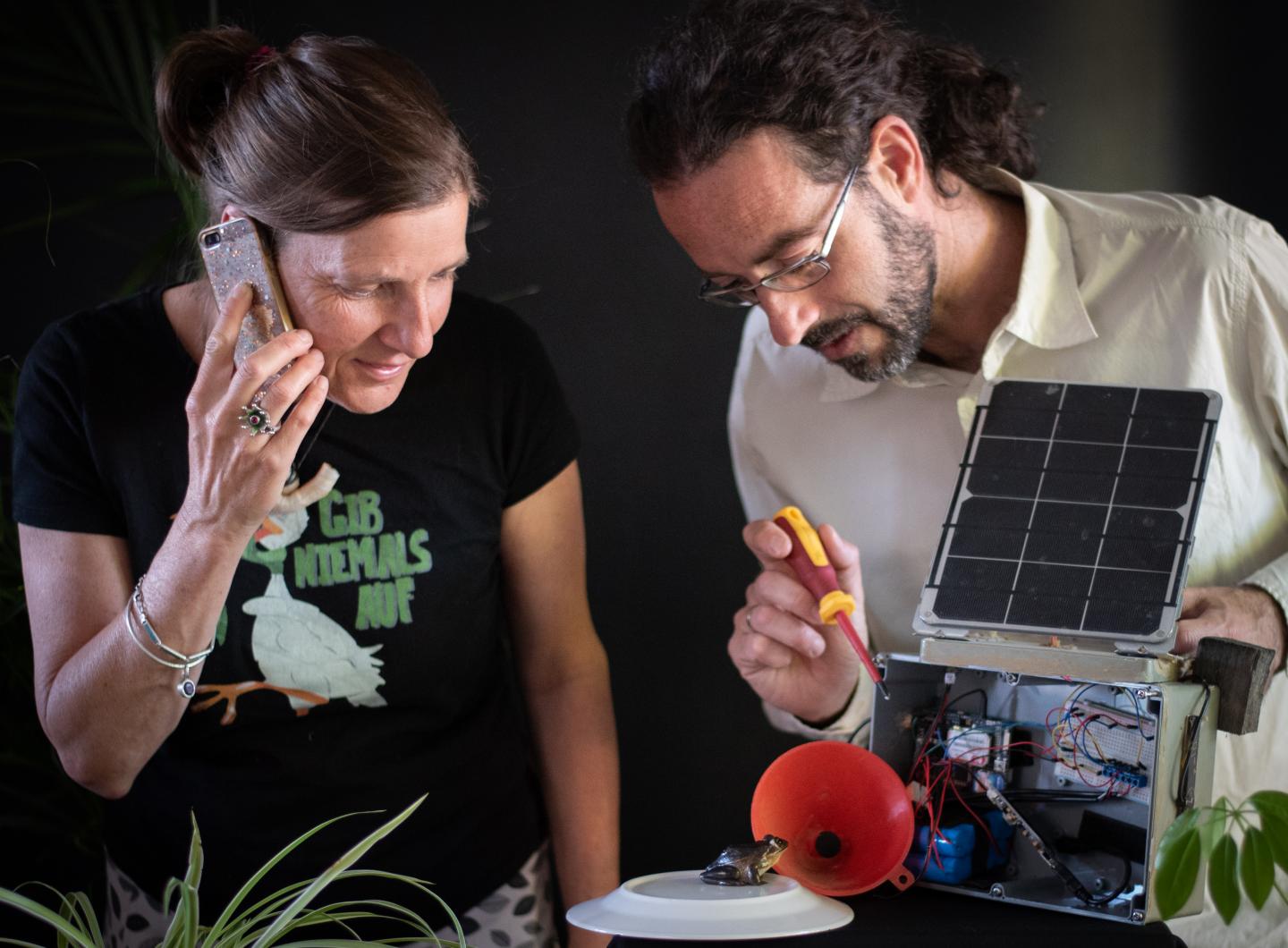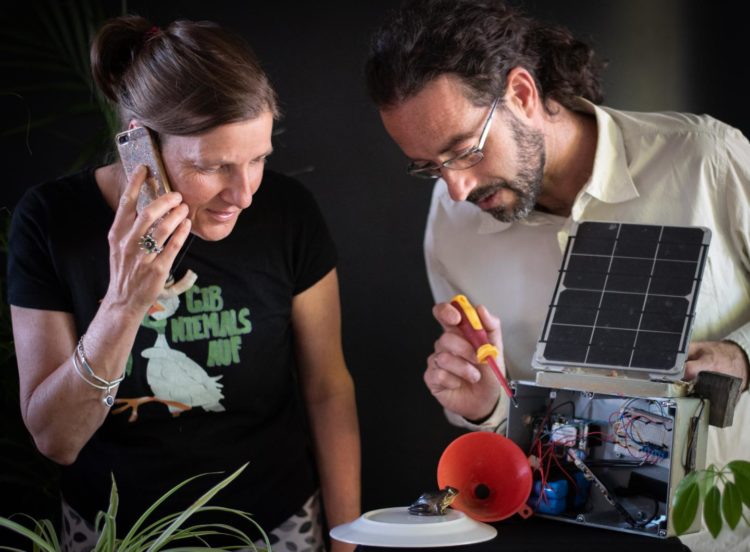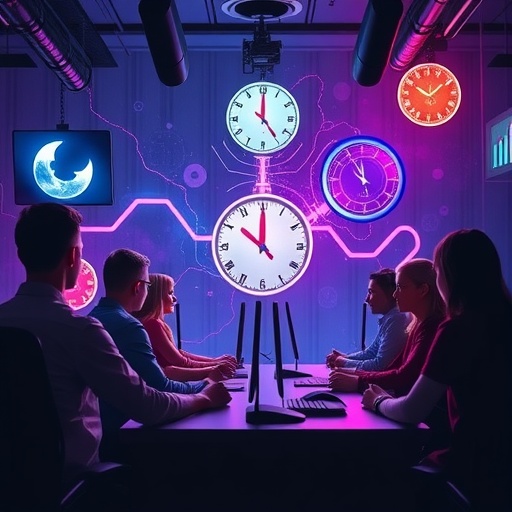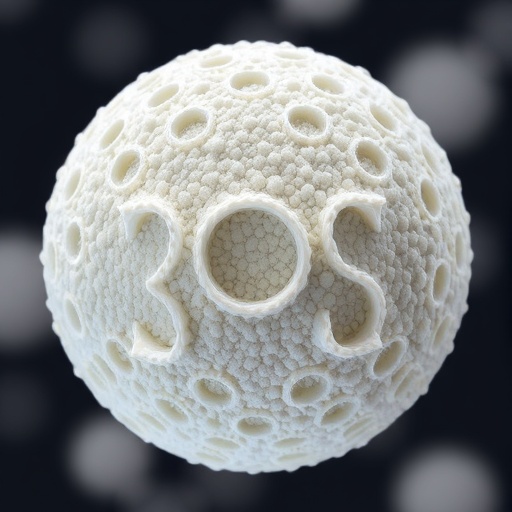
Credit: Marta Yebra Alvarez
Researchers have developed the ‘FrogPhone’, a novel device which allows scientists to call up a frog survey site and monitor them in the wild. The FrogPhone is the world’s first solar-powered remote survey device that relays environmental data to the observer via text messages, whilst conducting real-time remote acoustic surveys over the phone. These findings are presented in the British Ecological Society Journal Methods in Ecology and Evolution today.
The FrogPhone introduces a new concept that allows researchers to “call” a frog habitat, any time, from anywhere, once the device has been installed. The device has been developed at the University of New South Wales (UNSW) Canberra and the University of Canberra in collaboration with the Australian Capital Territory (ACT) and Region Frogwatch Program and the Australian National University.
The FrogPhone utilises 3G/4G cellular mobile data coverage and capitalises on the characteristic wideband audio of mobile phones, which acts as a carrier for frog calls. Real time frog calls can be transmitted across the 3G/4G network infrastructure, directly to the user’s phone. This supports clear sound quality and minimal background noise, allowing users to identify the calls of different frog species.
“We estimate that the device with its current microphone can detect calling frogs from a 100-150m radius” said lead author Dr. Adrian Garrido Sanchis, Associate Lecturer at UNSW Canberra. “The device allows us to monitor the local frog population with more frequency and ease, which is significant as frog species are widely recognised as indicators of environmental health” said the ACT and Region Frogwatch coordinator and co-author, Anke Maria Hoefer.
The FrogPhone unifies both passive acoustic and active monitoring methods, all in a waterproof casing. The system has a large battery capacity coupled to a powerful solar panel. It also contains digital thermal sensors to automatically collect environmental data such as water and air temperature in real-time. The FrogPhone uses an open-source platform which allows any researcher to adapt it to project-specific needs.
The system simulates the main features of a mobile phone device. The FrogPhone accepts incoming calls independently after three seconds. These three seconds allow time to activate the temperature sensors and measure the battery storage levels. All readings then get automatically texted to the caller’s phone.
Acoustic monitoring of animals generally involves either site visits by a researcher or using battery-powered passive acoustic devices, which record calls and store them locally on the device for later analysis. These often require night-time observation, when frogs are most active. Now, when researchers dial a device remotely, the call to the FrogPhone can be recorded indirectly and analysed later.
Ms. Hoefer remarked that “The FrogPhone will help to drastically reduce the costs and risks involved in remote or high intensity surveys. Its use will also minimize potential negative impacts of human presence at survey sites. These benefits are magnified with increasing distance to and inaccessibility of a field site.”
A successful field trial of the device was performed in Canberra from August 2017 to March 2018. Researchers used spectrograms, graphs which allow the visual comparison of the spectrum of frequencies of frog signals over time, to test the recording capabilities of the FrogPhone.
Ms. Hoefer commented that “The spectrogram comparison between the FrogPhone and the standard direct mobile phone methodology in the lab, for the calls of 9 different frog species, and the field tests have proven that the FrogPhone can be successfully used as a new alternative to conduct frog call surveys.”
The use of the current FrogPhone is limited to areas with adequate 3G/4G phone coverage. Secondly, to listen to frogs in a large area, several survey devices would be needed. In addition, it relies on exposure to sunlight.
Future additions to the FrogPhone could include a satellite communications module for poor signal areas, or the use of multidirectional microphones for large areas. Lead author Garrido Sanchis emphasized that “In densely vegetated areas the waterproof case of the FrogPhone allows the device to be installed as a floating device in the middle of a pond, to maximise solar access to recharge the batteries”.
Dr. Garrido Sanchis said “While initially tested in frogs, the technology used for the FrogPhone could easily be extended to capture other animal vocalisation (e.g. insects and mammals), expanding the applicability to a wide range of biodiversity conservation studies”.
###
Notes to Editors
For more information about this study and/or to arrange an interview, please contact:
Adrian Garrido Sanchis, Lead author, University of New South Wales Canberra, Canberra
Email: [email protected]
Sicily Fiennes, Press Office Assistant, British Ecological Society
Email: [email protected], T: +44 (0)20 3994 8255, M: +44 (0) 7525 966 919
Davy Falkner, Media Relations Officer, British Ecological Society
Email: [email protected], T: +44 (0)20 3994 8255, M: +44 (0) 7525 966 919
A pdf of the study and high-resolution images can be accessed here (https:/
Please note the captions and copyright information in the file names and credit the photographer appropriately.
The paper can be accessed here (https:/
This study is published in Methods in Ecology and Evolution.
All articles will be available at https:/
Twitter: @MethodsEcolEvol
British Ecological Society
Founded in 1913, the British Ecological Society (BES) is the oldest ecological society in the world. The BES promotes the study of ecology through a range of scientific literature, funding and events, education initiatives and policy work. The society has around 6,500 members from nearly 130 different countries. http://www.
Twitter and Instagram: @BritishEcolSoc
Media Contact
Sicily Fiennes
[email protected]
44-752-596-6919
Original Source
https:/
Related Journal Article
http://dx.





